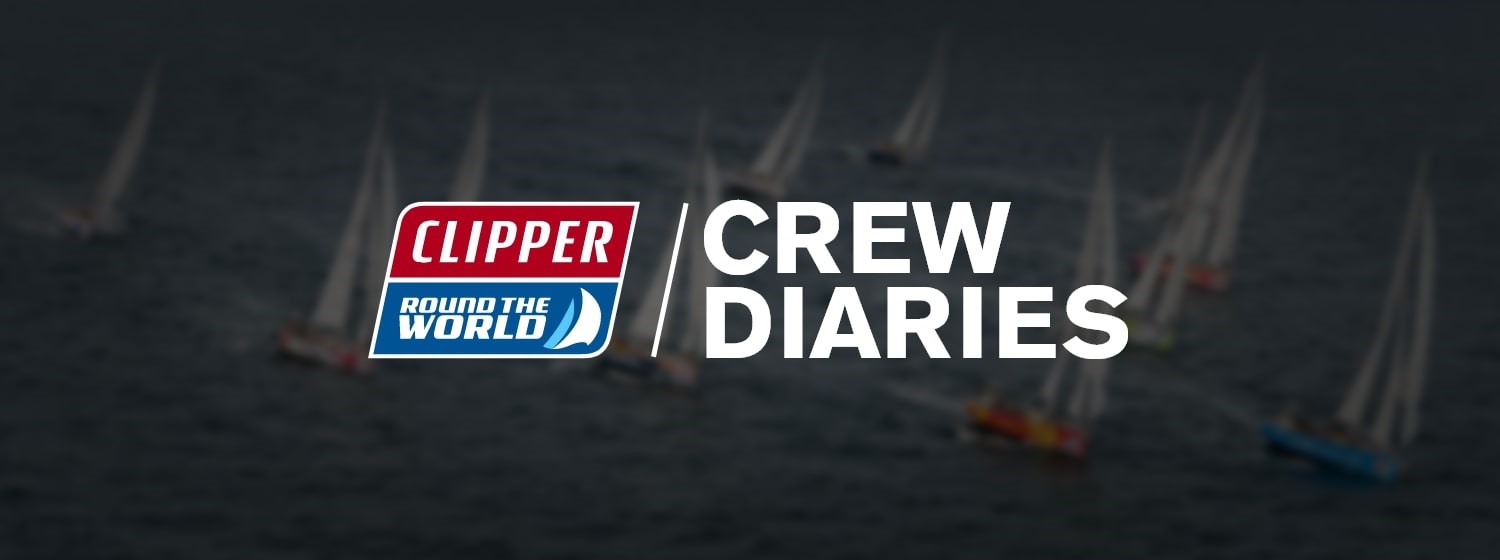The heat is oppressive. I struggle with it. I struggle a lot. The problem is that on deck, where there usually is a bit of a breeze, and where the temperature is reasonable, the sun just murders you, and sunburn is practically unavoidable, no matter how much sunscreen you slather on. So, you are forced under deck, where the conditions are an unpleasant mix between a Turkish steam bath, and a Finnish Sauna. Your choice basically is to die either by sunstroke or by heatstroke.
The analogy to the Sauna is actually quite apt, because sweaty and semi naked bodies abound, and everyone gets either completely comfortable with so much exposed flesh, or rapidly learns to filter it out and ignore it, because decorum and sensitivity become secondary in the interest of survival. I have no idea how all of my crew manage to cope so stoically, to maintain such an incredibly high level of good cheer, collegiality and good humour - and how they manage to keep up the good work at such a high level of professionalism.
To me this whole heat thing was particularly challenging, because I found the freezing cold and the perpetual dampness of the infamous Roaring Forties of the Southern Indian Ocean, that I had been thoroughly warned off and nonetheless tremendously enjoyed during Leg 3, so much easier to cope with than this damned heat. There is just so little you can do about it; heat turns out to be much harder to fight and mitigate than cold. Damn you to hell, entropy, you will be the end of all of us. But now enough of the whinging and whining, and on to the good stuff, and there really is plenty! After we were delayed in Airlie for five days because of the cyclone, and after we had to motor down to Mackay to clear customs, and motor out through the Great Barrier Reef’s Hydrographers passage, we finally assembled the fleet for the Le Mans Start, right out there in the middle of the Ocean. It is an uncanny experience to see the eleven boats seemingly appear out of nowhere, congregate, and then line up in exact formation, just to quickly disperse again, once the command to start the race is issued, and we are off and on our way.
It was absolutely fascinating to watch - and an almost transcendental experience. What adds to the joy of finally getting on with the race, is the discovery of the saltwater bucket shower that provides instant and most welcome relieve from the oppressive heat, tucked away in the low side corner, at the very end of the stern. (Did I mention the heat already? And how much I hate it?)But of course, what truly mitigates all and every one of the discomforts and irritating experiences, is the pure bliss and joy of SAILING.
The conditions vary constantly, and every day there is the opportunity to master - or fine tune - a new skill and to learn the intricate details about maintaining, sailing and racing one of the amazing Clipper Yachts. Before I get into the actual sailing, I want to say a few words about the daily maintenance work, that is absolutely critical for everyone’s wellbeing, the sound state of the boat and ultimately the success in the race.
And the uncontested hero of keeping everything in shape is undoubtedly Bob Staddon, the resident engineer, who is equipped with near magical powers to fix basically all and everything. I want to go here officially on the record and reiterate, that Bob has a standing offer to enter the Harvard PhD program, where I know he would work wonders to get my somewhat decrepit laboratory again in ship shape and in good working order.
The experience that probably left the most lasting impression with me, and I mean that in an entirely positive way, was when Bob and I spent a fascinating four hours in fixing the blocked forward toilet. Quote Bob: “the heads are doing an incredibly important job on this boat, and we need to treat them exceptionally well! “.
Identifying the location of the block required some intricate detective work, and an almost complete disassembly, not only of the toilet and pump itself, but of the entire piping system that connects the exit of the toilet bowl with the final exit hole in the hull of the ship through which the waste gets flushed into the sea. And as fate would have it, it was only in this last bit of piping, the one that exits into the sea after having traversed, below the floor, three separate compartments of the ship, that we identified the block.
One of the most satisfying moments of the whole trip was to gently bang the isolated, three meter long, PVC tubing, that Bob and I had removed from the sail locker room, in the bow and watch several pounds of calcified and crystalized crap plop gently into the sea. Reattaching the much, much lighter pipe back into the system was a breeze and a joy.
This was not the only chore, whose execution Bob’s expertise and competence turned into a genuinely joyful experience, it just was the most dramatic. But now on to all the activities that are more obviously related to the set of experiences and impressions one actually expects to hear about from a Clipper Round the World Race. For once, there are the sail changes, that keep everybody constantly busy, and that make up for a significant part of the evolutions, and the actual physical work that needs to get done.
Amongst these the spinnaker is a special case, and I have learned a lot in the past week about this most intricate amongst the sails. First, I learned that when packing it away, under deck and in the oppressive heat (have I mentioned the heat?), it needs meticulous wooling to allow accident-free hoisting. The wool prevents a premature unfolding of the sail, and the wool is tied at a strength such that it ideally will break only once the spinnaker is all the way up and in position to deploy.
Next, I learned that for a proper hoist, all three of the spinnaker’s corners need special attention. 1) - the clew: Running the sheets is distinctly more intricate than those for a Yankee or the staysail, especially if you rig it for a letterbox drop, 2) - the head: in the case of the spinnaker there are two of the halyards (i.e. the ropes that pull up sails and stuff up the mast) and they are elaborately attached with donut like structures to the top of the sail, and 3) - the tack: don’t get me even started on the elaborate science of “the tack“, this blog is far too shot to even remotely give it credit. Another manoeuvre, or evolution, that becomes the daily bread of a Clipper Race is “The reef”. Reefing, as well as un-reefing requires an intricate choreography of all crew members, which can get REALLY exciting if it needs to happen quickly, and urgently in the middle of a squall that unexpectedly has hit and flattened the boat.
The usual sequence of such an event is that all crew members flail in panic and run around like headless chickens, until Hanna makes her appearance on deck, often within less than a minute, which still seems like an eternity, and she instantly projects calmness, some levity and organizes the hapless crew within a few seconds into a well-oiled reefing machine.
One of my more memorable experiences, was to be sent up the mast in what seemed like a howling hurricane, to pull down the main sail into Reef 1 position, with the help of a convenient contraption called the “Handy Billy”, an all-purpose pulley system that comes in very handy for a lot of odd jobs on the boat. Ascending the mast was much easier than it might sound, because it was almost horizontally placed over the water due to the extreme heeling of the boat.
Most remarkable, is probably the sense of complete safety and control everyone experiences, even under such conditions that may seem at first sight quite dangerous indeed. I firmly believe that this sense of security is fully justified, and I believe this for three reasons.
First, these Clipper Yachts are built for exactly such conditions, and there is no doubt that they can handle this. Second, the crew is competent, and after four weeks of training, and various weeks and months at sea, they absolutely know what they are doing. Third, and most importantly, our peerless Skipper Hannah never, ever, fails to project utmost competence, calmness and expertise, and she always manages to quickly and professionally bring under control even the most critical and seemingly catastrophic situations. I have rarely felt safer and less at risk in my life then when doing manoeuvres, evolutions and generally dealing with problematic situations under Hannah’s expert guidance and tutelage.
Finally, there is the helming, the actual driving of the boat, which never ceases to fill me with pure joy and amazement. And, if you are lucky enough to steer the boat under a starry and moonless sky then you will experience one of the true wonders of this world. I’m quite familiar with the constellations of the Northern Hemisphere, but didn’t know much about the Southern half, and when I first encountered the Southern Cross, and, more importantly, it’s close and brilliant neighbour Alpha Centauri. I had genuine goosebumps all over my body. Not only did I observe our closest interstellar neighbour with my own eyes, I had the privilege of helming a fantastic boat with a fantastic crew, and with such a prominent celestial body as my guide star.
Here a little side note on “The Southern Cross”, which turns out to be a rather disappointing constellation indeed. It is nowhere near the Southern Pole! It points south the same way a broken clock tells time correctly twice a day. The North Star, Polaris, on the other hand, who made its first dramatic appearance on day 12, shortly after we crossed the equator and reached four degrees latitude, is striking in its constancy and unwavering assistance in proper orientation. It’s easy to imagine how the ancient mariners got so infatuated with this most stable of all celestial objects.
But, back to the probably most transcendental and inspirational of all experiences- helming a Clipper Yacht through a big ocean and using the stars as your primary means to navigate. This must be one of the more otherworldly moments to live through. It opens your heart to the size of the Universe, the expanse of the oceans, the unbridled forces of Nature, and, most importantly, it forges a connection to your fellow crew members that goes much deeper than what usually is possible on land, and it truly allows you to appreciate the kindness, good humour and generally the amazing personality traits that emerge when a ragtag group of individuals are thrown together in a semi closed container for many weeks, and shaken vigorously throughout. I believe that the Clipper Race brings out the best in people, I believe that everyone should give it a try, and I know that this is one of the best things I have ever done in my life.


